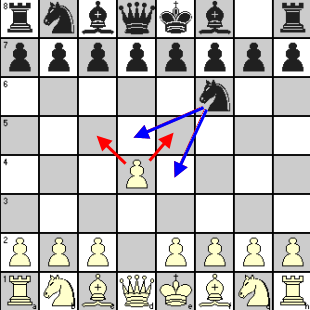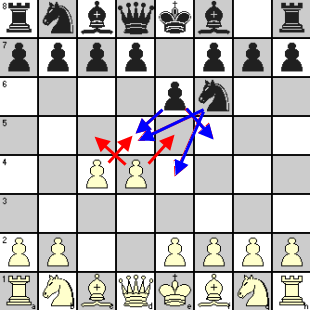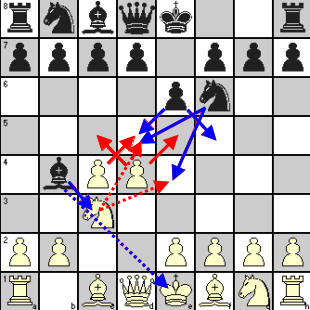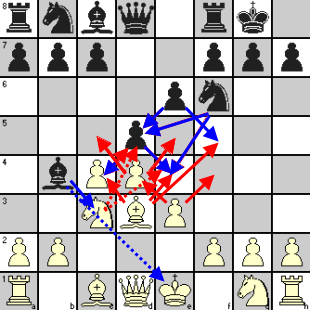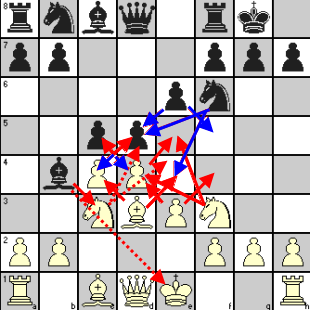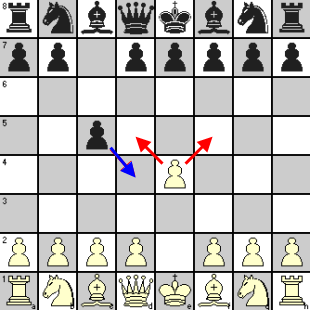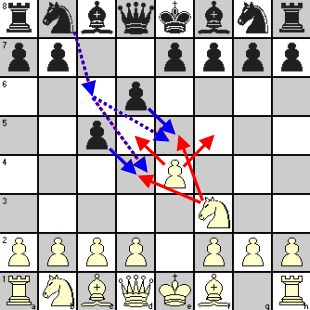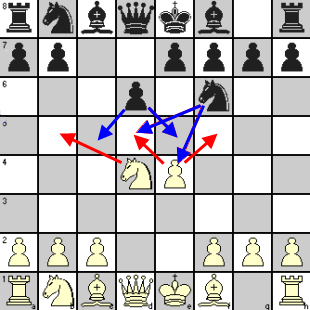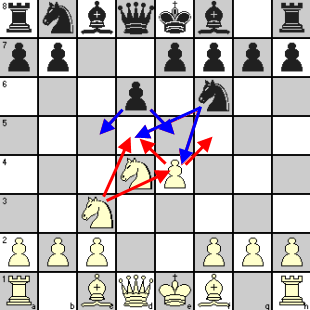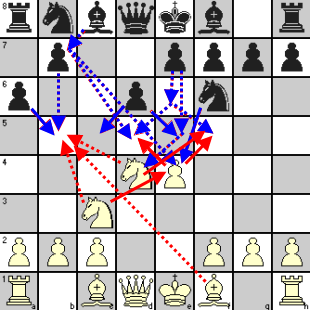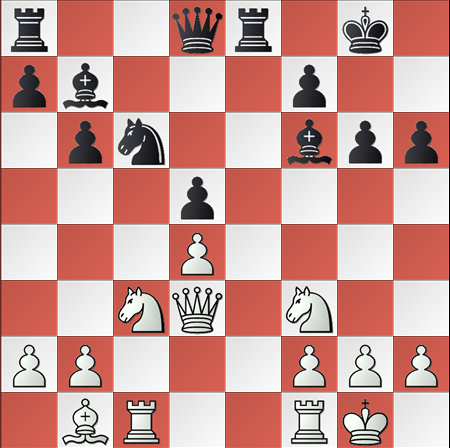The game of chess calls for shrewd analytical skills of positions coupled with calculations to gain control over the game. It is essential that good positional play should be entwined with calculations of moves and deployment of effective tactics assessing the overall position in the board. Having good control over the board positionally will not guarantee you any success over the opponent as long as you do not entwine the tactics effectively to gain control over the board. It is in this context that one should strive to be a good allround player instead of concentrating either only on his tactical skills or in positional factors.
In the following example, you will notice that having good positions will not lead to success as one silly error caused without giving importance to the opponent’s pieces, and due to paucity of time, ended up in losing the game from the winning position.
This is the position after 27 moves. It is the turn of the white to move now.
White is a good player in positional chess and now, a cursory look at the board indicates that white has an extra pawn than black. The game proceeded as follows :
28. Rc1 h6
29. Rc8+ Kh7
30. Rc4 Qe5
31. Rf4 Qc4
White, using his skills on positional chess has been making satisfactory progress. The position after 31 moves is given hereunder:
Not only is the white rook at f4 supporting the pawn at f2, the queen in b3 is threatening the black pawns at e6 and f7 and blocking their movement.
32. Kh2 ….. Another good move from White in an attempt to develop his pawns with King’s assistance.
32. ….. Kg7
33. Rg4+ Kh7
34. Rf4 Kg7
35. Qb4 Qc2
36. Kg2 e5
37. Rg4+ ……. This is a wrong move from White that has exposed the pawn at f2.
37. …… Kg6 Black tries to capitalize on the wrong move by White. He could have moved the King to h7 but instead preferred this move.
38. Qxb6+ ……. White continues to attack with fervor considering the fact that time is running out, and Black tried to confuse the confused white by moving the king to the “f” file.
38. ……. Kh5
This is the position at the board at the end of 38 moves.
39. e4+ …… This is the blunder on the part of White. He did not assess the winning position correctly and out of confusion and time constraint, deprived himself of a winning move in Kh3 and by calling check on Black, exposed the white rook at g4, and literally threw the game.
39. …… Kxg4
40. Qe3 Rd3
41. Qxh6 Rxg3 After this White resigned accepting defeat.
This is a clear example of how confusion caused by the opponent and paucity of time can change the whole advantage into a loss.
For any aspiring chess player to grow up the ladder and achieve success, he or she should develop as a complete player having allround skills and not relying on any particular skill as positional play or tactical player. Positional analysis and calculation of the moves and counter moves are very essential for the deployment of a good successful chess strategy or an effective chess tactics.
